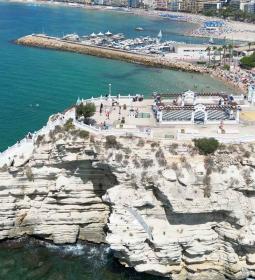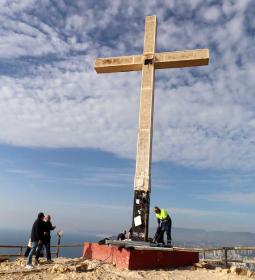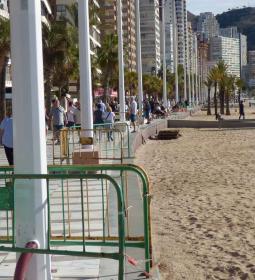Benidorm approves the start of the tender for the creation of a Low Emissions Pedestrian Zone on Armada Española Avenue
Benidorm approves the start of the tender for the creation of a Low Emissions Pedestrian Zone on Armada Española Avenue

The Local Government Board (JGL) of Benidorm City Council has approved the start of the tender for the creation of a Low Emissions Pedestrian Zone in Armada Española avenue, whose budget amounts to 1,277,748.11 euros, as shown in the proposal of the Councilor for Works, José Ramón González de Zárate.
The project has a municipal contribution of 1,028,387 euros and a subsidy from the Alicante Provincial Council, charged to the Planifica Plan, of 249,360 euros. The project is multi-annual, for the years 2022 and 2023, and for each of them, there is an item of 638,874.06 euros charged to the municipal budgets of this year and the next.
The objective of the action is "to promote the use of soft means of mobility (bicycles and personal mobility vehicles) and move the private vehicle to dissuasive car parks further from the urban centre such as those of Xixo or Beniardá avenue" as indicated by Mayor Toni Perez.
To do this, the parking area for bicycles in tractor centres and mass transit stations and the extension of the cyclability conditions of the road space will be reinforced. "Thanks to the policy in favour of active and sustainable mobility that we have been carrying out for years, in Benidorm we already have a lot of ground ahead," said the mayor.
Another objective is to promote pedestrian mobility through the implementation of a street with no sidewalks. These actions, Pérez has opined, "will help reduce polluting emissions, promote innovation, modal change and accessibility".
In this sense, the first mayor has emphasized the "commitment" of Benidorm City Council to mobility and sustainability, which "is evidenced by the actions that have been carried out over the years in the city with the objective of improving the quality of life of our citizens”. To this end, the use of active mobility in the urban environment has been facilitated and made more attractive “with the creation of bike lanes, cycle paths or pedestrian itineraries.
For the City Council, Pérez added, it is "a priority issue and an essential requirement" to continue working on sustainable mobility "to move towards this new city model that allows us to definitively respond to current challenges and those that will come in the future".
Currently, the Armada Española avenue has a two-way bike lane, a one-lane roadway for the transit of residents and delivery vehicles with a speed of 10/20 kilometres per hour and a pedestrian sidewalk.
The work includes the creation of a road with no sidewalks, as well as actions to encourage the use of bicycles and minimize CO2 emissions. Among other elements, the placement of a bicycle counter, smart parking for bicycles, an environmental monitoring system, information systems for urban public transport and vehicle access control will be reinforced.
The global project that Benidorm has proposed is the creation of three large low emission zones in Levante, Centro and Poniente, with an approximate area of 35 hectares. This will entail other actions such as the adaptation and the use of tools for parking lots with guidance to the places, more secure parking lots for bicycles with improved signage by means of 'metrobici' or the management of loading and unloading areas.
"We intend", has indicated the mayor, "reduce the intensity of vehicles that circulate in these sections and improve environmental and pedestrian conditions. In short, what we do is a friendly, comfortable city within the sustainability objectives and at the same time be a model against climate change ”he concluded.






